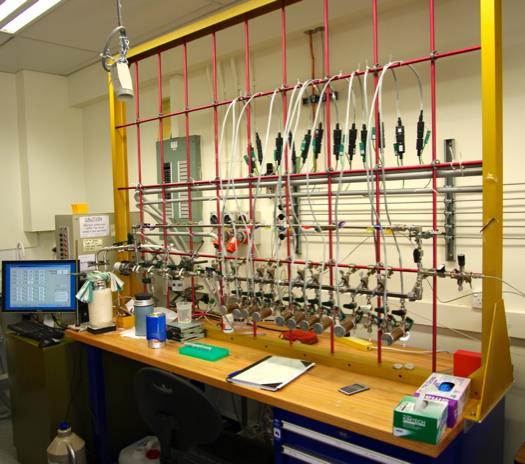Laboratory methods

Some of our routine sample preparation methods are summarized below. This is not an extensive list of the sample types we date. If you require more detailed information or would like to submit an unusual sample type, please let us know.
Visual inspection
Prior to pretreatment, all samples are visually inspected for common contaminants such as rootlets and glues. These are noted and physically removed along with the surface of the sample. To aid pretreatment, the sample is then broken into small pieces by crushing or shaving to increase the surface area.
Chemical pretreatment
The chemical pretreatment assigned to a sample depends not only on its material, but also its age. Very old samples are extremely sensitive to young contaminants and require much more thorough pretreatments than young samples. This is why ask you to let us know the expected age of the sample on the submission form.
If samples are suspected of being conserved or glued, or if young resinous wood is dated, a series of solvent washes is applied. Please let us know if a sample has been conserved – it is not always possible to tell just by looking at it! If conservation or gluing is extensive, the sample may not be possible to date accurately.
| Sample type | Chemical pretreatment |
|---|---|
|
Bone and dentine |
Collagen is extracted and cleaned according to an ultrafiltration protocol (e.g. Brock et al. 2010). Acid is used to remove the bone mineral and any exogenous carbonates, alkali is used to remove humic substances and the sample is acidified to dissolved carbonated. The sample is then gelatinized by heating in a dilute acid, turning the insoluble collagen into soluble gelatin allowing large insoluble particles to be removed with a filter and small soluble molecules to be removed with an ultrafilter. |
|
Charcoal |
<30 ka charcoal is cleaned using a standard acid-base-acid protocol to remove exogenous carbonates, humic acids and degraded charcoal and finally dissolved carbonates respectively. |
|
Unburnt plant material |
<30 ka unburnt plant material is cleaned using a standard acid-base-acid protocol followed with a short bleach step. |
|
Shell |
Soft white recrystallized material is removed with a drill prior to treatment. The sample is then washed in dilute acid to remove at least 10 wt%. |
Table 3; Chemical pretreatments for sample types commonly submitted to the laboratory
Conversion to graphite
For measurement on the AMS, the sample must be converted to graphite. This is undertaken in two steps. First the sample is converted to carbon dioxide, either by combusting organic samples or by acidifying carbonates. This carbon dioxide is cleaned and collected using a series of cryogenic traps. Second the carbon dioxide is converted to graphite by reaction with hydrogen over an iron catalyst by heating to 570oC. This process is currently undertaken manually. However, we are building and automated system which will allow us to increase the number of samples dated in the laboratory.
